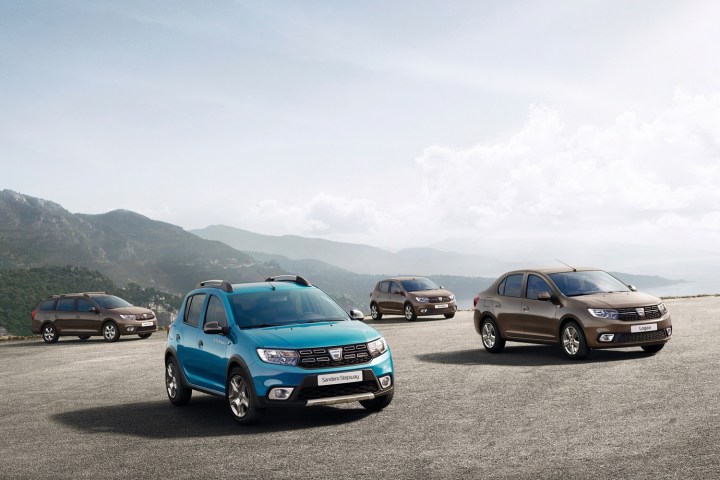
Both the Sandero and the Logan receive an updated front end design characterized by new-look headlights and a revised grille with chromed rectangular inserts. The look is markedly inspired by the Duster, a model that stand out as one of the most popular SUVs in Europe. Photos of the cars’ rear end haven’t been published yet, but Dacia assures us the nip and tuck continues out back.
Dacia also promises the updates continue inside with new features, better materials, and additional storage areas, though we’ll have to wait until the start of the Paris show to find out precisely what the company has in store.
It doesn’t sound like the aesthetic upgrades are complemented by mechanical modifications. That means buyers who want a gasoline-powered model can choose between an antiquated 1.2-liter, four-cylinder engine rated at 75 horsepower, and a much more modern 0.9-liter, three-cylinder that uses a turbocharger to generate 90 horses. Also available are 75- and 90-horsepower versions of Renault’s wildly popular 1.5-liter turbodiesel four-banger.
Front-wheel drive and a manual transmission come standard, and a semi-automatic gearbox is available at an extra cost on select models.
Read more: Renault’s Sandero R.S. hot hatch is a forbidden fruit that even Europeans can’t have
Dacia’s updated Logan and Sandero will go on sale across Europe in the coming weeks. They’ll also be sold in a handful of other markets — including Latin America — with a Renault emblem on the grille. The Duster is soldiering on unchanged, but a brand new model built on Renault-Nissan’s modular CMF platform will debut during next year’s edition of the Geneva Auto Show.
Editors' Recommendations
- Volkswagen’s electric ID.Life concept car doubles as a gaming console
- New York International Auto Show canceled for 2020
- Car shows were already endangered. Coronavirus might make them extinct
- Lexus unveils its first electric car, but it’s unlikely to be sold in the U.S.
- New Hyundai Ioniq electric vehicle gets big boosts in range and horsepower




